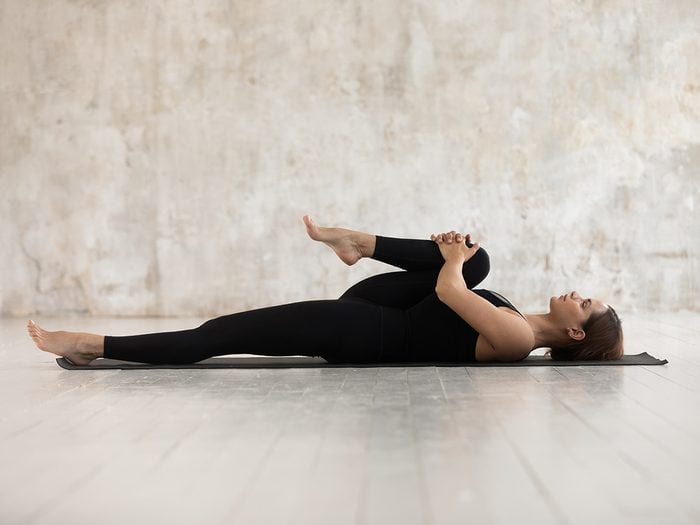People with type 2 diabetes may be able to keep their blood sugar and weight stable by maintaining a diabetes with exercise. Also, it might make it less likely that you’ll have a heart attack or stroke, cut down on the things that put you at risk for heart disease, and generally improve your health and well-being.
Those who have prediabetes have a better chance of avoiding diabetes if they maintain an active lifestyle. There are advantages associated with physical exercise that have nothing to do with weight loss. But, in order to see effects over a longer period of time, it is essential to adhere to a workout routine over time.
If you haven’t been very active, but you want to start working out, you should arrange an appointment with a medical professional first to make sure there are no physical restrictions or other reasons why you shouldn’t. You always want to get out to a sluggish start and work your way up to your ultimate aim.
Swimming for Diabetes Control
The joints in your body won’t experience as much pressure as they do during other types of aerobic exercise when you do. In addition to that, it gives you the opportunity to exercise both your upper and lower body at the same time. Swimming is also beneficial to the health of one’s heart. It is also possible to assist in decreasing cholesterol and cause increased calorie burn. It would help if you let any lifeguards who are working know that you have diabetes.
Jump Rope Your Way to Better Blood Sugar
While we may not think of the game we all played when we were children as a means to prevent developing diabetes, it is possible that it is a high-intensity and high-energy kind of exercise. Jumping rope is a fun method to get your heart rate up, burn calories, and improve strength and endurance all at the same time. People with diabetes may better regulate their blood sugar levels, as well as their cholesterol and blood pressure, with the use of this supplement. Jumping rope is a great cardio exercise that can be done anywhere, including inside, outdoors, and even with other people.
Yoga a Gentle Approach to Control Diabetes
Yoga includes practices such as meditating, deep breathing and moving slowly and gently. Doing so will make you more steady, mobile, and powerful. This is particularly beneficial for elderly persons with type 2 diabetes, who may be more prone to trip and fall as a result of their condition. Practicing yoga may assist you in maintaining healthy blood sugar and cholesterol levels.
Dance Your Way to Better Health
Your exercises are more enjoyable if you include some dancing in them. Dancing improves not only your cardiovascular health but also your fitness level and may help bring down your blood sugar levels. According to the findings of one research, those with type 2 diabetes who participated in a dance programme were more likely to maintain a routine compared to those who participated in another kind of fitness programme.
Step Up Your Diabetes Control with Stair Climbing
Those who have type 2 diabetes may find that this approach, which is both healthful and simple, helps them burn calories and gets their heart and lungs working faster. Climbing stairs for three minutes about two hours after a meal is an effective technique to burn off sugar that has been absorbed into the bloodstream. You can do it anyplace there is a staircase, such as when you need a break at work, and you have access to one.
Walk Your Way to Health
Individuals like walking as a form of exercise since it has a minimal effect on their bodies. Your glucose levels, cholesterol levels, and blood pressure will all improve in direct proportion to the number of steps you take. And individuals achieve their daily need for cardiovascular exercise by engaging in at least 30 minutes of vigorous walking at a pace of around 100 steps per minute. You may also increase the difficulty of your strolls by including stair climbs in them. If, on the other hand, you were not active before you were notified that you had diabetes, you need to begin carefully and then gradually increase your activity level.
Cycling for Diabetes Control
According to the Health and Human Services (HHS), cycling is another kind of aerobic exercise that makes the heart stronger, improves the functioning of the lungs, and burns calories. Individuals who go out on their bikes for recreation on a regular basis have a lower risk of being overweight and less likely to have high blood pressure. To go on a ride, you need to go inside of your home. Since it can be used inside, a stationary bike might be useful because it allows a person to exercise regardless of the weather.
Running for Your Life
You are able to move from walking briskly to running if you put in the effort to exercise and acquire clearance from your physician. Researchers have shown that those who exercise regularly have a decreased chance of developing high blood pressure, high blood sugar, and high cholesterol.
Dig into Gardening
If traditional exercise doesn’t appeal to you, don’t worry. As you labor in your garden, you are providing your body with a workout that is both aerobic and strength-based. Your circulatory system receives a boost as you move around and do activities like walking, kneeling, and bending. Your muscles and bones develop stronger as a result of activities such as digging, lifting, and raking. You can manage your diabetes with exercise, and being outside may help you feel less stressed.
Get in the Flow with Tai Chi
By moving the body in ways that are smooth and soft, this Asian method of exercise helps to relax the mind as well as the body. Researchers have found that those who practice tai chi have a significantly easier time keeping their blood sugar under control. They also report having increased strength and vitality, in addition to improved mental health.
The Benefits of Team Sports
Team sports are the most beneficial form of exercise for diabetes because they enable participants to unconsciously achieve their activity requirements without even realizing it. If you have problems motivating yourself to exercise on a regular basis, consider playing a team activity such as basketball, football, or tennis. These sorts of team sports are excellent for the cardiovascular and respiratory systems, which are used in the management of diabetes with exercise. You and your partner will be getting in a workout without even realizing it if you both take turns passing the ball back and forth to one another.
How Much Exercise is enough for Diabetes Patient
Aerobic exercise that lasts at least half an hour and is performed at least five days per week may help increase insulin sensitivity. We are discussing activities that stimulate your heart and lungs, so increasing the volume of blood that flows through your body. If you haven’t been physically active in a while, begin by exercising for five to ten minutes each day and work your way up from there. Contact your primary care physician before starting an exercise programme to help you manage your diabetes with exercise.
Conclusion
If you want to get the most out of your workout, schedule it between one and three hours after a meal when your blood sugar levels are most likely to be at their highest. If you use insulin, you are required to monitor your blood sugar levels before engaging in physical activity. A piece of fruit or a modest snack can boost your blood sugar level and prevent you from having hypoglycemia if it is below 100 mg/dL before you begin your workout. If you check your blood sugar level again after a half an hour, you will be able to determine whether or not it has remained the same.
In addition to this, it is recommended that you have your blood sugar checked after engaging in strenuous activity or exercise. If you use insulin, the time between six and twelve hours after you exercise may be when your risk of experiencing low blood sugar is at its maximum. If your blood sugar is already excessively high (over 250), your doctor may additionally recommend that you refrain from working out since exercise has the potential to raise blood sugar levels even more it is a best option to control your diabetes with exercise.
About Author: The content is written by Maha. She has five years of experience in writing health articles.














